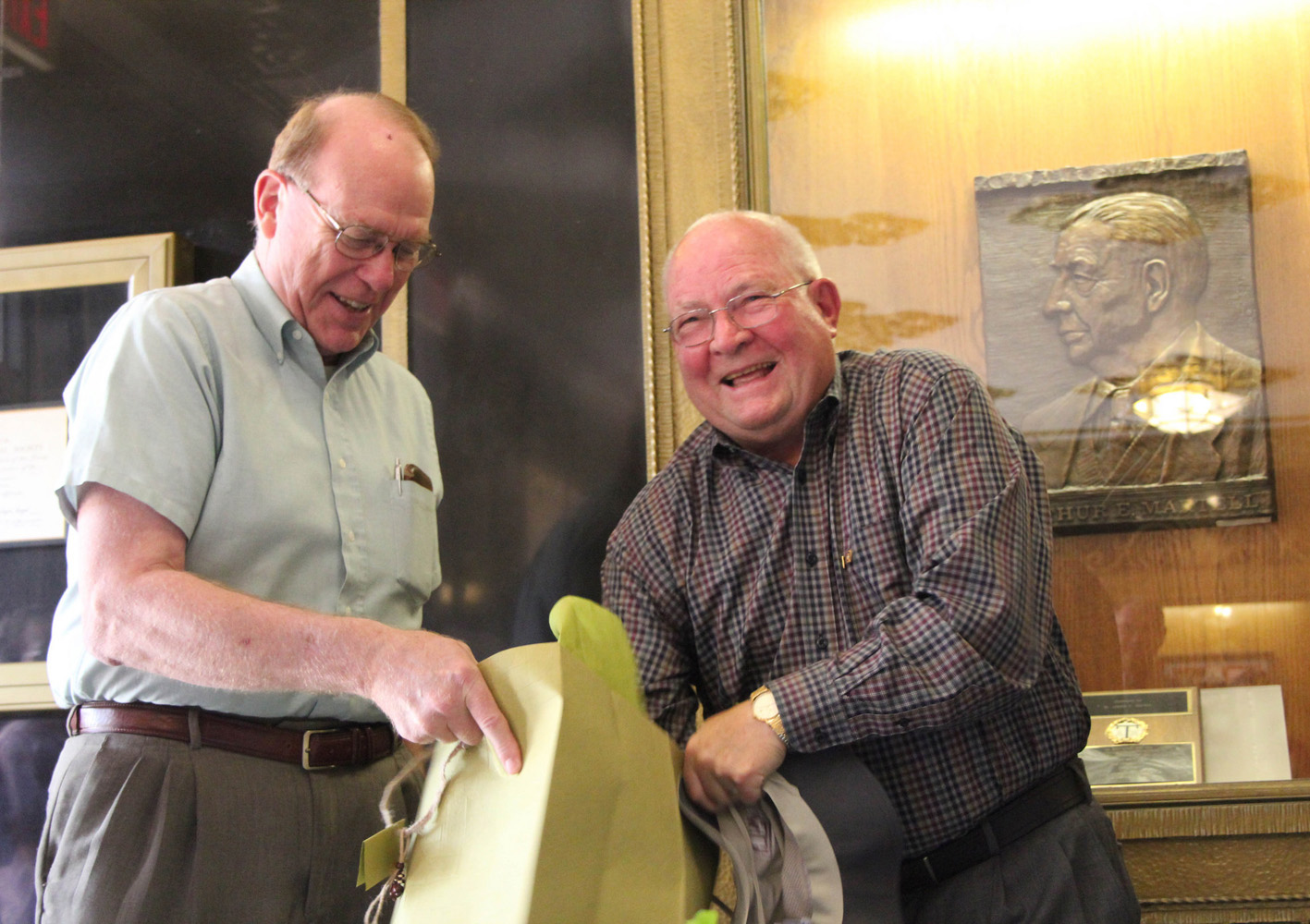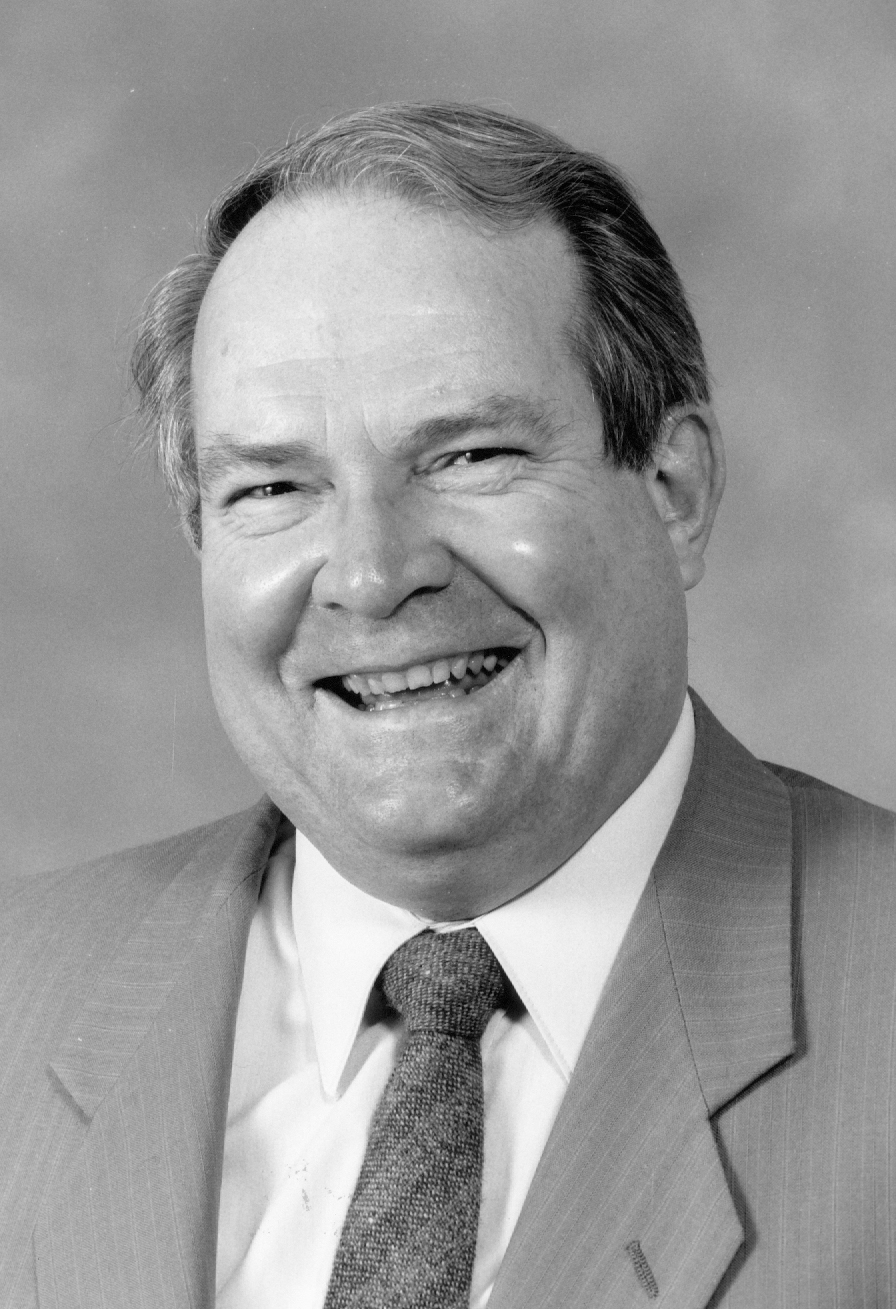
John P. Fackler Jr., world-respected Texas A&M University chemist and a leading international figure in inorganic chemistry, died Saturday (Feb. 25) at his home in The Woodlands, according to his family. He was 88.
A memorial service is set for 11 a.m. Friday (March 3) at Lord of Life Lutheran Church in The Woodlands under the direction of Klein Funeral Home and Memorial Park for Fackler, a distinguished professor emeritus of chemistry who came to Texas A&M in 1983 as a professor of chemistry and dean of the College of Science — a post he held until 1992, when he returned full-time to the faculty in the Department of Chemistry. Originally named a distinguished professor of chemistry and toxicology in 1987, he was appointed to the rank of distinguished professor emeritus in 2008. He continued to serve in a part-time role with the university after his retirement, eventually closing his laboratory when he and his wife, Naomi, relocated to The Woodlands in 2014.
Born on July 31, 1934, in Toledo, Ohio, Fackler received a bachelor of arts with majors in chemistry, physics and mathematics from Valparaiso University in 1956. He earned his doctorate in chemistry in 1960 from the Massachusetts Institute of Technology while studying under the late F. Albert Cotton, who had first taught at MIT prior to coming to Texas A&M in 1972. Fackler subsequently taught at the University of California, Berkeley (1960-1962) and Case Western Reserve University (1962-1982) and as a visiting professor at the University of California, Santa Barbara (1969) before deciding to join Cotton at Texas A&M, where both remained throughout their prolific careers that revolutionized inorganic chemistry and related disciplines.

Fackler is recognized as among the leading two or three chemists worldwide in the field of organometallic gold chemistry, an area in which his work has evolved fundamental structural concepts currently being used to understand the role of gold in catalysis, a vibrant field of chemistry. Beyond transition-metal inorganic chemistry, his interests centered on beta-diketonates, metal-sulfur chemistry and the Jahn-Teller properties of metal complexes. In total, Fackler published more than 375 research papers, one undergraduate text and two edited books while advising more than 30 doctoral students and 40 postdoctoral researchers as well as many undergraduate students.
“My first memory of John was when he and Abe [Clearfield] took my wife Diana and me to lunch when we were considering moving to College Station and helped convince us to join the faculty,” said Simon W. North, John W. Bevan Professor of Chemistry and head of the Texas A&M Department of Chemistry. “He was a wonderful man, and I am happy that I got to work with him and his postdoctoral student Mohammad Omary on some interesting photoluminescence studies.”
In addition to research and teaching, Fackler was actively involved in inorganic chemistry educational outreach, which he viewed as key to strengthening the understanding of inorganic chemistry and emphasizing chemical applications of group theory, syntheses, structure and spectroscopy. Among his many administrative and service roles at Texas A&M beyond Dean of Science, Fackler chaired the Executive Committee of Distinguished Professors and the Council of Principal Investigators while serving on the Faculty Senate, the Research Environment Council and the Quality Enhancement Plan Council, which he chaired from 2002 to 2005. He also served on the first steering committee of the Community of Faculty Retirees.

“I was so lucky to serve under John Fackler when he was Dean of Science and I was a department head,” said Texas A&M statistician and Dean Emeritus of Science H. Joseph Newton, former head of the Texas A&M Department of Statistics (1990-1997) and former Dean of Science (2002-2015). “I learned so much about science and science administration that helped me later when I became dean.
“John and Naomi did so much for Texas A&M and Bryan-College Station, and my wife Linda and I were lucky to have them as friends.”
Fackler was a member of the American Chemical Society (ACS) since 1956, serving as councilor, a past chair of both the Cleveland and Texas A&M Sections, a past chair of the Inorganic Division and a career consultant for 20 years. He was elected as one of 162 inaugural ACS Fellows in 2009.
A fellow of the American Association for the Advancement of Science and the American Institute of Chemists, Fackler also was a member of the Royal Society of Chemistry, Sigma Xi, the American Crystallography Association, the Academy of Science (Director, 1987-1989) and the Pegasus Society of Robinson College, Cambridge.
In addition to Fulbright, John Simon Guggenheim and Bye Fellowships, Fackler received many major career honors and awards, including the ACS’s Morley Medal (1987), Southwest Regional Award (1990) and Distinguished Service to Inorganic Chemistry Award (2001); a Manchot Forschungsprofessur (Wilhelm Manchot Research Professorship) from the Technical University of Munich, Germany (1992); and a Texas A&M Association of Former Students Distinguished Achievement Award in Research (2007). He also received an honorary doctorate from Valparaiso University in 1987 and was celebrated with several special lectureships, including a 2001 appearance in Texas A&M's multi-year University Distinguished Lecture Series. In addition, he served as a member and past chair (1988-1989) of the Board of Trustees for the Gordon Research Conferences, a world-renowned series of scientific conferences.

“John Fackler was a major leader in inorganic chemistry and a much-respected colleague,” said Texas A&M inorganic chemist Marcetta Y. Darensbourg, a fellow distinguished professor of chemistry. “His mentorship of me was so subtle that I didn’t know it happened ‘til it was over. He led a very active and balanced life, equally proud of his family, of his politically-involved wife, of his research contributions and of his service to Texas A&M University and to his profession. We met here in College Station last November and discussed many things, including his twice-a-week golf, his remembrances of his famous mentor, F.A. Cotton, and his pride in the many coworkers who had graced his laboratories. You can tell by that cherubic smile that John was a really good person.”
Fackler is preceded in death by his wife of nearly 62 years, Naomi, in 2018, and a daughter, Cheryl Ruth Fackler Hug, in 2013. He is survived by their children Katherine Grace Fackler Chapman, Karla Sue Fackler Grafton, John Martin Fackler and Dorothy Louise Fackler as well as their nine cherished grandchildren: Jenna Chapman, Ian Chapman, Nicholas Fackler Hug, Colin Fackler Hug, Andrew Grafton, Rebekah Grafton, Dan Grafton, Ava Fackler and Owen Fackler.
In lieu of flowers or other offerings, memorial donations may be made to Lord of Life Lutheran Church, The Rotary Club of The Woodlands or Valparaiso University (please denote either The Reverend Martin Th. Steege Endowed Scholarship Fund or the John and Naomi Fackler Lectureship in Chemistry and English).


